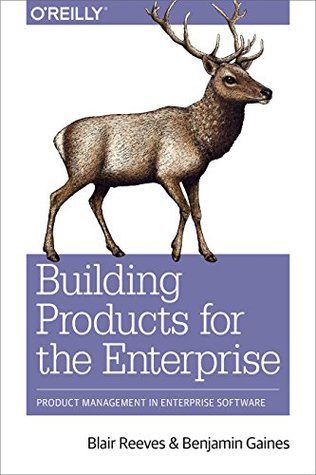More on this book
Kindle Notes & Highlights
by
Blair Reeves
Started reading
September 4, 2018
The tech industry is a rapidly changing place, and we know all too well that there’s no one, true way to do product management.
defining the product vision, establishing the operational plan to get there, and then executing on it.
We’re also no one’s boss. Product typically works with other teams, not over them. The product manager is no one’s CEO and usually works with little or no formal authority to tell anyone what to do.
it’s also to understand how our users work, what their jobs and industries are like, and how our products fit into their lives.
Our users work directly with our product to perform some function that allows them to do their jobs better, more easily, or efficiently.
These types of customers have a very different set of selection criteria than their direct reports, our users, who will actually be using our product day in and day out.
There is probably an infinite list of projects you could spend time on, but choosing which of these two stakeholders to over-serve, and how, will depend on you, the product manager, understanding which is going to best drive your product’s success.
significant upstream consequences for how enterprise products need to be planned, built, sold, distributed, and serviced.
with a clear understanding of who our product is for and why it adds value.
“You will never reach your destination if you stop and throw stones at every dog that barks.”
That’s how you develop a short-term product perspective, which obviously doesn’t produce the kind of innovation that redefines industries.
figure out who you are building for by deeply understanding customer problems, and figure out how to build by driving alignment across teams.
good product management involves recognizing and deeply understanding problems. The people who buy and use your software have them. The
the people who use your software day to day are often not the people whose problems are the most valuable to solve
hire your product to solve a problem.
customer problems are common to the entire organization and reflect barriers to your customers’ growth.
As a product manager, there is no better way to gain the trust and respect of the groups you’re trying to align internally than to consistently and confidently articulate customer problems and why they are critical to the companies that buy your software.
It is, however, a warning against focusing on user problems at the expense of customer problems,
frequently, user problems have limited upside for you to solve.
industry-shaping growth comes from solving the big, meaty customer problems that often take years, not months (or sprints!), of work.
The best way to become essential for the companies that buy your products is to help them grow their business
Ultimately, all user problems flow out of, and support, customer problems. Solve customer problems in a way that pleases your users, and solve user problems that make their organizations’
overarching business goals easier for your users to obtain.
“who we build for” is all about the importance of finding problems that prevent your customers from growing, “how we address this problem” involves then helping our colleagues in various roles
objectives and key results (OKRs),
put customer problems first in your thinking as a product manager.
the “goat rodeo”).
Customer problems are your “currency” as a product manager, because it’s only by solving them that you prove the potential for your product to unlock transformational value.


